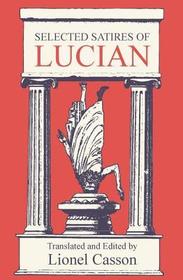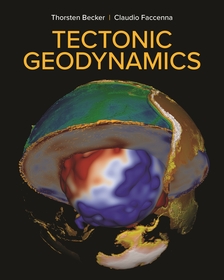
Language Change: Theoretical and Empirical Perspectives
Sorozatcím: Jerusalem Studies in Philosophy and History of Science;
-
12% KEDVEZMÉNY?
- A kedvezmény csak az 'Értesítés a kedvenc témákról' hírlevelünk címzettjeinek rendeléseire érvényes.
- Kiadói listaár EUR 160.49
-
66 563 Ft (63 393 Ft + 5% áfa)
Az ár azért becsült, mert a rendelés pillanatában nem lehet pontosan tudni, hogy a beérkezéskor milyen lesz a forint árfolyama az adott termék eredeti devizájához képest. Ha a forint romlana, kissé többet, ha javulna, kissé kevesebbet kell majd fizetnie.
- Kedvezmény(ek) 12% (cc. 7 988 Ft off)
- Kedvezményes ár 58 575 Ft (55 786 Ft + 5% áfa)
Iratkozzon fel most és részesüljön kedvezőbb árainkból!
Feliratkozom
66 563 Ft

Beszerezhetőség
Még nem jelent meg, de rendelhető. A megjelenéstől számított néhány héten belül megérkezik.
Why don't you give exact delivery time?
A beszerzés időigényét az eddigi tapasztalatokra alapozva adjuk meg. Azért becsült, mert a terméket külföldről hozzuk be, így a kiadó kiszolgálásának pillanatnyi gyorsaságától is függ. A megadottnál gyorsabb és lassabb szállítás is elképzelhető, de mindent megteszünk, hogy Ön a lehető leghamarabb jusson hozzá a termékhez.
A termék adatai:
- Kiadó Springer Nature Switzerland
- Megjelenés dátuma 2025. november 29.
- Kötetek száma 1 pieces, Book
- ISBN 9783031852916
- Kötéstípus Keménykötés
- Terjedelem483 oldal
- Méret 235x155 mm
- Nyelv angol
- Illusztrációk X, 483 p. 30 illus. Illustrations, black & white 700
Kategóriák
Hosszú leírás:
This book offers a comprehensive exploration of recent advances in empirical, theoretical, and experimental research on language change, with a focus on semantic evolution. Bridging the gap between historical linguistics, rooted in philology, and formal semantics, grounded in mathematical logic, it uncovers how insights from one discipline can illuminate the other. Delving into a wide range of linguistic phenomena, and tracking both entailed and presupposed content in historical change, the book examines semantic topics such as causation, concession, negation, reflexivity, numerals, and approximatives, alongside topics related to temporal and aspectual features of language. It also explores pragmatic concepts like topic marking and mirativity. Some papers in the volume focus on morphological and syntactic language change, discussing the rate of morphological change, patterns of subordination, periphrastic structure, and Differential Object Marking. By presenting innovative methodologies, including experimental work, the book reveals key mechanisms behind language change and its interaction with formal and non-formal factors. Designed for researchers and advanced students in linguistics and philology, this volume addresses fundamental questions about the causes, timing, and principles driving linguistic change. It also sheds light on how historical insights can deepen our understanding of synchronic phenomena, offering a fresh perspective on the dynamics of language evolution.
TöbbTartalomjegyzék:
Part 1: Constraints and Methodology in linguistic change.- Chapter 1. Syntactic Change: Traversing the Fitness Landscape (Paul Kiparsky).- Chapter 2. Cyclicity effects in the development of Presuppositions (Remus Gergel).- Chapter 3. Exploring rates of replacement in grammatical Morphology (Patience Epps).- Chapter 4. Why new future markers are often banned from negative contexts (Omri Amiraz & Eitan Grossman).- Chapter 5. Lexical change and grammaticalization: tracking down auxiliary COME (Nora Boneh).- Chapter 6. Grammaticalization of differential object marking: an experimental study (Shira Tal).- Part 2: Semantic Change.- Chapter 7. The preterite loss in Southern German: How extralinguistic and intralinguistic factors conspire (Regine Eckardt).- Chapter 8. From stative to perfective: A reanalysis of the resultative to perfective path in light of Semitic data (Kevin Grasso).- Chapter 9. Recurrent change: On the semantics and pragmatics of pathways (Aynat Rubinstein).-Chapter 10. How can history inform semantics: A formal study of external negation (Elitzur Bar‐Asher Siegal).- Chapter 11. Latin quidem: the interplay of scalarity with negation and contrast in semantic change (Lieven Danckaert).- Chapter 12. Why almost and almost are not even approximately the same: The diachronic semantics of approximatives in Hungarian (Tamas Halm).- Chapter 13. Failed changes in Germanic and Romance possessive phrases (Alexandra Simonenko).- Chapter 14. A reflexive cycle (Noa Bassel).- Part 3: Describing linguistic change.- Chapter 15. Historical change in the expression of temporal ordinality in Biblical Hebrew (Adina Moshavi).- Chapter 16. Subjectivity and subordination: The interaction between syntax and semantics in Biblical Hebrew (Christian Locatell).- Chapter 17. Middle Voice in Ugaritic: the N‐stem and Gt‐stem in typological and historical perspective (Tania Notarius).
Több








